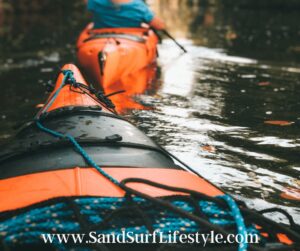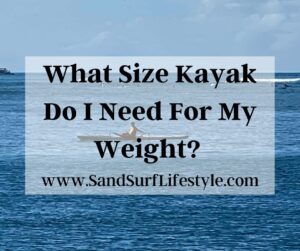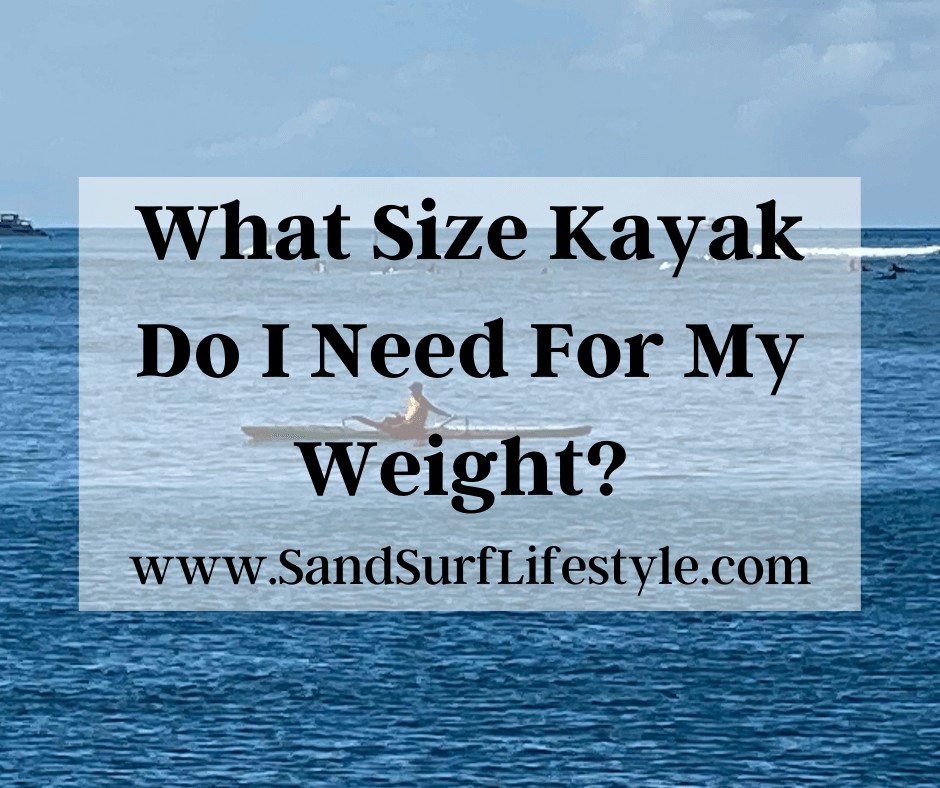What size kayak do I need for my weight?
Kayaking is a sport that anyone can get into, regardless of your skill or knowledge of the sport. But because kayaks are so customized to your height and weight, it’s imperative to have a properly sized watercraft to accommodate your needs, both physically and recreationally.
A kayak’s size is determined by the paddler’s height and weight and can vary between brands. A person under 140 pounds requires a smaller, lighter kayak between 8 and 10 feet long, while a person over 180 pounds requires a high-volume kayak at 12 to 14 feet. Width of the kayak is also dependent on the size of the paddler—the heavier the paddler, the wider the kayak.
These are not the only factors that can help you pick the proper kayak size for you. Understanding how a kayak works and taking both the size you need and the activity you wish to do under advisement is important before ever considering purchasing your own kayak. Read on to find out more about the factors that go into building a kayak and how they affect your experience.
Kayak Construction: Why is it important?
 A kayak is a small and narrow boat that is propelled by a double-bladed paddle and traditionally has a covered deck with room for one or more paddlers. While modern kayaks vary from the boats in which they were based, the means of propulsion usually remain the same, unless the boat has propellers or gas engines.
A kayak is a small and narrow boat that is propelled by a double-bladed paddle and traditionally has a covered deck with room for one or more paddlers. While modern kayaks vary from the boats in which they were based, the means of propulsion usually remain the same, unless the boat has propellers or gas engines.
Regardless of how you propel your kayak, it is still imperative to get a kayak that fits your height and weight. There are a few considerations to make when looking into your own kayak.
First is displacement—how high or low the kayak sits in the water. If it is not enough for the passenger, and the passenger weighs too much for the kayak to hold, it will sink. If the displacement is too little for the kayak, it will float too high and be nearly impossible to handle. The larger it is, the more drag it will produce, and the harder it is to paddle.
Beginner paddlers may feel more comfortable in a sit-in kayak that is rated for a higher weight capacity, based on their ability to keep the deck above the water.
For the higher weight capacity of paddlers and gear, kayaks can have a wider hull and higher sides to accommodate the displacement. Because most manufacturers stick to a weight capacity of about 140 pounds to 190 pounds, it is important to find the right size—if your kayak is too large, you may become tired from paddling easily.
The length of the kayak is another concern as you look to purchase your own. While a longer kayak can be paddled faster, and a narrower kayak reduces drag, it is less easily maneuvered and not always best for beginners.
Length is also a factor when considering your height because the length determines your amount of legroom. While you want a tight fit, you also do not want something so tight that you cannot get out easily. The longer it is, the less control you have, so finding a happy medium between the two is key.
Another issue to consider is the rocker or the curve of the kayak along its length. The more curved the bottom is, the more maneuverable the kayak is. The less rocker it has, the harder it is to turn.
You must also consider the width of your kayak at the cross-section, or the beam. A wider kayak means there is more displacement and can be shorter, making it better to maneuver. If it is narrower, it means that while easier to paddle, it will be less easy to maneuver.
What do you want to do in your kayak?
 The next question you have to ask yourself when considering purchasing your own kayak is what you want to actually do in your new boat. Activities vary, and with that comes size differentiation.
The next question you have to ask yourself when considering purchasing your own kayak is what you want to actually do in your new boat. Activities vary, and with that comes size differentiation.
A kayak that is comfortable on calm waters will not be the same kayak you would use on whitewater rapids and vice versa; a kayak used in open water requires more stability due to waves and should be longer, while a kayak for rapids would be shorter for better control and maneuverability. Making that determination will help you figure out how long and wide your kayak should be.
There are a few different types of kayak, including the recreational kayak, fishing kayak, and touring kayaks.
A recreational kayak is your traditional kayak—most are sit-on-top and built for comfort. They are also shorter and wider for better stability, usually sitting around 12 feet long and no more than three feet wide.
A fishing kayak is longer than most recreational kayaks, sitting around 10 to 14 feet long and under 4 feet wide. Due to the fact that you would be casting lines out of this boat, the width helps by adding additional stability so you do not tip over while fishing.
If you are looking to get into touring with your kayak, a larger kayak may be best for you. These kayaks can be up to 20 feet in length while keeping the width to about two feet, while also giving you room for storage. They are more comfortable when heading out to sea, but can be less stable and less maneuverable.
Not sure whether to get a kayak or canoe? Here are the pros and cons of each.
Choosing the Right Size: Weight
If you are under five and a half feet tall and weigh less than 140 pounds, you will need a low-volume kayak. Paddlers over 5 feet, ten inches tall, and over 180 pounds will need a high volume kayak, and those who fall in the middle should use a medium volume kayak. For example, if you are over 180 pounds, a high-volume kayak is best at between 12 and 14 feet.
Your average recreational kayak usually has a weight limit of 300 pounds, while a touring kayak has a weight limit of 350 pounds. The sit-on-top kayak tops out at a 400-pound limit.
When looking at the weight capacity of a kayak, try to find a kayak that would accommodate you and any gear you may take with you. Keeping your total weight at 30 to 35 percent under the weight limit will ensure that you do not overload the kayak and remain with the right amount of displacement. Understanding that percentage is integral to your experience—multiply the maximum weight of the kayak you are considering by 0.65 to 0.70 to make sure you and your gear will fall within the range of its capacity.
Choosing the Right Size: Length
 The length of the kayak goes hand in hand with choosing the right size for your weight. While the average kayak is around ten feet long, it can range from six to 16 feet, depending on the activity. Most recreational kayaks are about 10 to 12 feet long.
The length of the kayak goes hand in hand with choosing the right size for your weight. While the average kayak is around ten feet long, it can range from six to 16 feet, depending on the activity. Most recreational kayaks are about 10 to 12 feet long.
If you are under six feet tall, most sit-in kayaks will fit you well. If you are taller than that, look into a longer option for optimal legroom.
If you are shorter than about five and a half feet tall, a low-volume kayak between 8 and 10 feet long is best for you.
If you are taller than 6 feet, a high-volume kayak will fit you best at 12 to 14 feet long.
Choosing the Right Size: Width
After finding the best length and volume for your kayak, you will also have to consider its width. The more you and your cargo or gear weigh, the wider the kayak should be. For example, if you are under 5 feet five inches and you and your cargo weigh 230 pounds, you should be within the 24-to-28-inch range on your kayak.
Paddlers who are between 5 feet 10 inches and 6 feet 2 inches at the same weight should err towards the 27-to-28-inch range for the width of their kayak.
When shopping for the right kayak size for you, remember to include your cargo weight and consider what is most comfortable for you. Kayak sizes vary among brands and knowing the general idea of the size you need will only make the purchase of your own kayak run smoother. Understanding your needs for your weight—along with your height—is key in making sure you have the right, best-fitting kayak for your needs!
RELATED QUESTIONS
Should I use a sit-on-top or sit-in kayak?
Your position in the kayak depends on what activities you will be doing while you are in the kayak. If you are looking for a kayak that is for fishing or other recreational activities, consider a sit-on-top kayak. A sit-in kayak is used more for storage and longer touring activities.
Who should sit in the front of a tandem kayak?
When using a tandem kayak, the more experienced paddler should sit in the back. As they have more control, they should be the heavier and stronger paddler as well. The more experienced, the better, as they are considered in charge of the vessel and navigate the kayak.

Please note: This blog post is for educational purposes only and does not constitute legal or medical advice. Please consult a legal expert or medical professional to address your specific needs.

